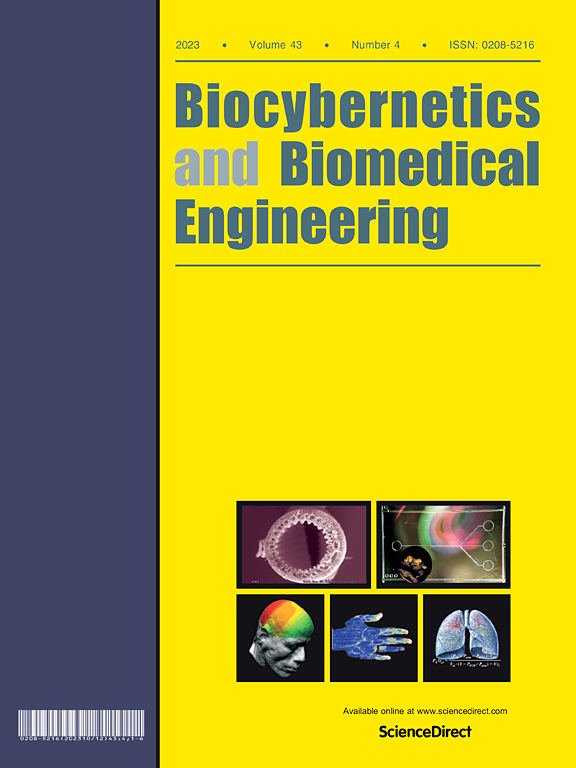展望未来:预测5.5秒的人类警惕性,以提高工业5.0的安全性
IF 6.6
2区 医学
Q1 ENGINEERING, BIOMEDICAL
引用次数: 0
摘要
在工业5.0和人机交互的背景下,通过避免人为错误来确保操作人员的安全至关重要。监测警惕性下降是这项工作的一个重要方面,旨在减轻安全风险和提高生产力。一个潜在的解决方案是使用基于脑电图(EEG)记录的被动脑机接口(BCI)。然而,其在工业环境中的应用还有待深入探索。本研究利用脑电图数据引入一种新的实验方案和分析管道来预测工业研究实验室的警觉性退化。数据集来自10名健康志愿者,他们观察机械臂23分钟。使用连续小波变换(CWT)计算随时间变化的脑电图功率谱。在用线性回归模型确定了α波段的功率增长后,我们用四种模型预测了其趋势。作为传统方法,我们使用向量自回归(VAR)模型,作为与三种深度学习架构进行比较的参考:时间卷积网络(TCN),门控循环单元(GRU)和编码器-解码器(ED)-GRU。本文提出的ED-GRU模型预测精度最高达5.5 s,平均绝对误差为0.048,R2 = 0.726。研究结果表明,监测工业5.0中的警惕性退化是一种可行的策略,可以防止重复性任务中的人为事故和性能下降。本文章由计算机程序翻译,如有差异,请以英文原文为准。
A glimpse ahead: Forecasting 5.5-s human vigilance for enhanced safety in Industry 5.0
In the context of Industry 5.0 and human-robot interaction, ensuring the safety of operators by avoiding human errors is crucial. Monitoring vigilance decrement is an essential aspect of this effort, aimed at mitigating safety risks and enhancing productivity. A potentially promising solution to this challenge is using a passive brain-computer interface (BCI) based on electroencephalography (EEG) recordings. However, its application in industrial settings has yet to be explored in-depth. This study uses EEG data to introduce a novel experimental protocol and analysis pipeline to predict vigilance degradation in an industrial research laboratory. The dataset was gathered from ten healthy volunteers who observed a robotic arm for 23 min. The EEG power spectrum over time was computed using the continuous wavelet transform (CWT). After confirming growth in power for the α band using a linear regression model, we forecast its trend using four models. As a conventional approach, we used the vector autoregressive (VAR) model, serving as a reference for comparison with three deep learning architectures: a temporal convolutional network (TCN), a gated recurrent unit (GRU) and an encoder-decoder (ED)-GRU. The proposed ED-GRU model outperformed the others showing accurate forecasts (mean absolute error = 0.048, R2 = 0.726) up to 5.5 s. The findings suggest that monitoring vigilance degradation in Industry 5.0 is a feasible strategy to prevent human accidents and reduced performance during repetitive tasks.
求助全文
通过发布文献求助,成功后即可免费获取论文全文。
去求助
来源期刊

Biocybernetics and Biomedical Engineering
ENGINEERING, BIOMEDICAL-
CiteScore
16.50
自引率
6.20%
发文量
77
审稿时长
38 days
期刊介绍:
Biocybernetics and Biomedical Engineering is a quarterly journal, founded in 1981, devoted to publishing the results of original, innovative and creative research investigations in the field of Biocybernetics and biomedical engineering, which bridges mathematical, physical, chemical and engineering methods and technology to analyse physiological processes in living organisms as well as to develop methods, devices and systems used in biology and medicine, mainly in medical diagnosis, monitoring systems and therapy. The Journal''s mission is to advance scientific discovery into new or improved standards of care, and promotion a wide-ranging exchange between science and its application to humans.
 求助内容:
求助内容: 应助结果提醒方式:
应助结果提醒方式:


